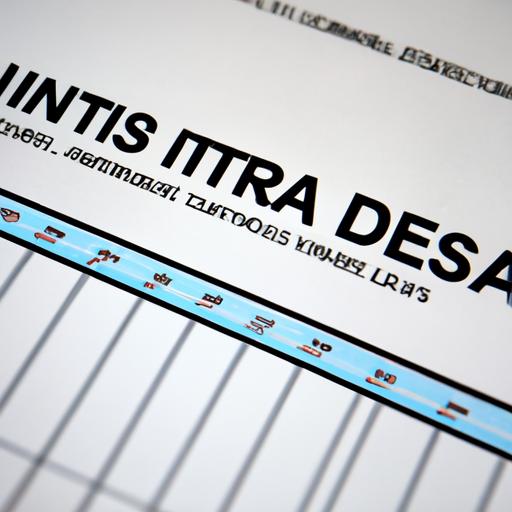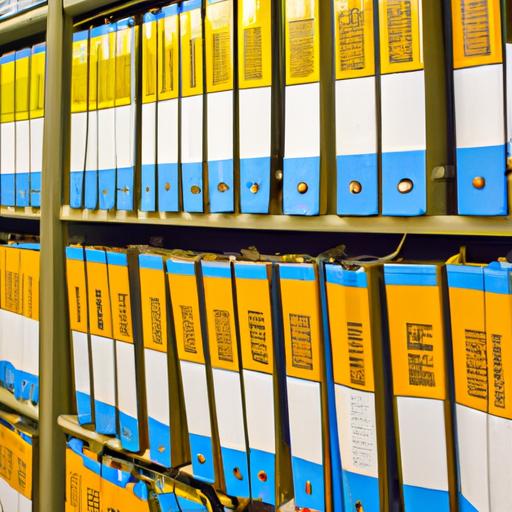Do you ever wonder how we gather valuable data to understand highway safety trends and make informed decisions about vehicle safety? Enter the highway loss data institute (HLDI), a nonprofit research organization dedicated to shedding light on crucial information regarding highway losses. In this article, we will delve into the importance of HLDI’s data and how it plays a pivotal role in shaping our understanding of highway safety.
Overview of the Highway Loss Data Institute
The Highway Loss Data Institute, also known as HLDI, is a renowned nonprofit research organization affiliated with the Insurance Institute for Highway Safety (IIHS). With a primary focus on collecting and analyzing insurance data related to vehicle losses, HLDI plays a vital role in providing valuable insights to various stakeholders in the automotive industry.
Unveiling the Importance of HLDI’s Data
HLDI’s data is a treasure trove of information that is instrumental in understanding the dynamics of highway safety. By meticulously examining insurance claims and loss data, HLDI offers a comprehensive understanding of the risks associated with different vehicle makes and models. This data not only assists vehicle manufacturers in improving safety features but also guides insurers in assessing risk levels accurately.
So, why is HLDI’s data so crucial in understanding highway safety trends? By analyzing the frequency and severity of losses, HLDI can identify patterns and trends that can help policymakers and researchers make informed decisions. This data empowers us to address critical issues such as theft rates, collision statistics, and safety ratings, ultimately leading to safer highways for all.
As we journey through the remaining sections of this article, we will unravel the history and background of the Highway Loss Data Institute, gain insights into the data it provides, explore its impact on the automotive industry, and conclude with the significance of HLDI’s work in promoting highway safety.
Stay tuned to discover how HLDI’s data is an invaluable asset that drives us towards a safer and more secure future on the roads!
What is the Highway Loss Data Institute?

Role of HLDI as a Nonprofit Research Organization
At the core of the automotive industry’s pursuit of safety and innovation lies the Highway Loss Data Institute (HLDI). As a nonprofit research organization, HLDI plays a pivotal role in gathering and analyzing crucial data related to vehicle losses. The insights derived from this data are instrumental in shaping the future of highway safety.
Collecting and Analyzing Insurance Data for Safer Highways
One of HLDI’s primary functions is to collect and analyze insurance data specifically related to vehicle losses. Through partnerships with various insurance companies, HLDI obtains a vast pool of information encompassing different types of losses, including theft, collision, and damage. This data is then meticulously examined to uncover trends, patterns, and risk factors that contribute to highway safety.
HLDI’s team of experts utilizes advanced analytical techniques to extract meaningful insights from the collected data. By focusing on specific vehicle makes and models, they can identify potential safety concerns and highlight areas where improvements can be made. This data-driven approach enables HLDI to provide valuable information to various stakeholders, including vehicle manufacturers, insurers, and policymakers.
The dedication and expertise of HLDI in collecting and analyzing insurance data set it apart as a reliable and authoritative source for highway safety information. The organization’s commitment to transparency and accuracy ensures that the insights provided are trustworthy and influential in shaping the industry’s understanding of safety trends.
As we continue our exploration, the following section will delve into the history and background of the Highway Loss Data Institute, shedding light on its evolution and contributions over the years. Stay tuned to uncover the fascinating journey of HLDI and its impact on highway safety!
History and Background of the Highway Loss Data Institute

Founding of HLDI and its Affiliation with the Insurance Institute for Highway Safety (IIHS)
The Highway Loss Data Institute (HLDI) has a rich history that dates back to its founding. Established in 1972, HLDI was created with the aim of providing valuable insights into vehicle losses and the associated insurance claims. HLDI’s affiliation with the Insurance Institute for Highway Safety (IIHS) further strengthens its authority and expertise in the field of highway safety.
Evolution of HLDI’s Data Collection Methods Over the Years
Over the years, HLDI’s data collection methods have evolved to keep pace with the changing landscape of the automotive industry. Initially, data collection relied heavily on manual processes, which were time-consuming and limited in scope. However, advancements in technology have revolutionized the way data is collected and analyzed.
With the advent of computerized systems and the widespread adoption of digital platforms, HLDI has been able to gather data more efficiently and comprehensively. This shift has allowed for the inclusion of a wider range of variables and factors that contribute to vehicle losses. The use of sophisticated algorithms and data modeling techniques has further enhanced the accuracy and reliability of HLDI’s findings.
As we delve deeper into the subsequent sections, we will explore the specific data categories provided by HLDI, including vehicle makes and models, loss frequencies, and severity. By understanding the evolution of HLDI’s data collection methods, we can better appreciate the wealth of insights that their data offers and how it has shaped our understanding of highway safety trends.
Stay tuned as we uncover the valuable data provided by HLDI and the impact it has on the automotive industry. By examining the past, we gain a deeper appreciation for the present and future of highway safety research.
Understanding the Data Provided by the Highway Loss Data Institute

HLDI’s Data Categories
When it comes to understanding the intricacies of highway safety, the Highway Loss Data Institute (HLDI) offers a comprehensive range of data categories. These categories provide valuable insights into various aspects of vehicle losses, allowing us to make informed decisions and take appropriate actions. Here are some key data categories provided by HLDI:
1. Vehicle Makes and Models: HLDI’s data encompasses a wide range of vehicle makes and models. By analyzing the performance of different vehicles in terms of loss frequencies and severity, HLDI helps us gauge their safety levels and identify potential areas of improvement.
2. Loss Frequencies: HLDI’s data reveals the frequency at which losses occur for different vehicle categories. This information is crucial in understanding the risks associated with specific vehicles and can guide both manufacturers and consumers in making informed choices.
3. Loss Severity: HLDI’s data not only explores the frequency of losses but also delves into the severity of these losses. By examining the financial impact of accidents, thefts, and other incidents, HLDI provides crucial insights into the potential risks and damages associated with different vehicles.
Insights from HLDI’s Data
HLDI’s data goes beyond mere numbers and statistics; it offers profound insights into critical aspects of highway safety. By harnessing this data, we can gain a deeper understanding of various factors that impact safety ratings, theft rates, and collision statistics. Here are some key insights provided by HLDI’s data:
1. Safety Ratings: HLDI’s data plays a pivotal role in determining safety ratings for different vehicles. By analyzing the frequency and severity of losses, HLDI can identify trends and patterns that contribute to a vehicle’s safety rating. This information empowers consumers to make informed choices when selecting a vehicle that prioritizes safety.
2. Theft Rates: HLDI’s data helps us comprehend theft rates and patterns across different vehicle makes and models. By identifying the vehicles that are more prone to theft, HLDI’s data assists in developing effective anti-theft measures and strategies to protect our valuable assets.
3. Collision Statistics: HLDI’s data sheds light on collision statistics, enabling us to understand the factors contributing to accidents and collisions. By studying the frequency and severity of collisions, HLDI’s data aids in designing safer road infrastructure, implementing effective traffic management strategies, and developing advanced safety features in vehicles.
Stay tuned as we explore how the Highway Loss Data Institute’s invaluable data influences the automotive industry and drives us towards safer highways!
How HLDI’s Data Impacts the Automotive Industry
Influence of HLDI’s Data on Vehicle Manufacturers, Insurers, and Policymakers
When it comes to shaping the automotive industry, the impact of HLDI’s data cannot be overstated. Vehicle manufacturers, insurers, and policymakers all rely on the invaluable insights provided by HLDI to make informed decisions and create safer vehicles and roadways.
1. Vehicle Manufacturers: Driving Safety Innovation
HLDI’s data serves as a compass for vehicle manufacturers, guiding them in enhancing safety features and designing vehicles that prioritize occupant protection. By analyzing the frequency and severity of losses for different vehicle makes and models, HLDI’s data highlights areas that require improvement. This invaluable information enables manufacturers to identify potential safety flaws, implement necessary modifications, and ultimately produce safer vehicles.
2. Insurers: Assessing Risk Accurately
Insurance companies heavily rely on HLDI’s data to assess the risk associated with insuring different vehicles. By examining the loss frequencies and patterns, insurers can better understand the likelihood of accidents, thefts, and other incidents that could result in financial losses. Armed with this knowledge, insurers can accurately determine insurance premiums, ensuring fair pricing based on the actual risks involved.
3. Policymakers: Informed Decision-Making
Policymakers play a crucial role in developing regulations and initiatives aimed at improving highway safety. HLDI’s data equips policymakers with evidence-based insights to make informed decisions and shape effective policies. By understanding the statistics and trends provided by HLDI, policymakers can address pressing issues such as vehicle theft rates, collision statistics, and safety ratings. This enables them to implement measures that promote safer roadways, protecting the lives of countless motorists.
Use of HLDI’s Data to Improve Vehicle Safety Features and Design
The data provided by HLDI not only influences decision-making but also fuels innovation in vehicle safety. By analyzing the comprehensive data on losses, manufacturers can identify specific areas where safety features can be enhanced. This includes improving structural integrity, developing advanced driver-assistance systems, and implementing cutting-edge technologies to mitigate the risk of accidents and minimize the severity of potential injuries.
Moreover, HLDI’s data allows for benchmarking and comparison among different vehicle models, encouraging healthy competition and driving manufacturers to strive for improved safety standards. As a result, consumers can enjoy a wider range of vehicles equipped with advanced safety features, ultimately leading to safer journeys on the highways.
In the final section of this article, we will conclude our exploration of the Highway Loss Data Institute and reflect on the significance of its work in promoting highway safety.
